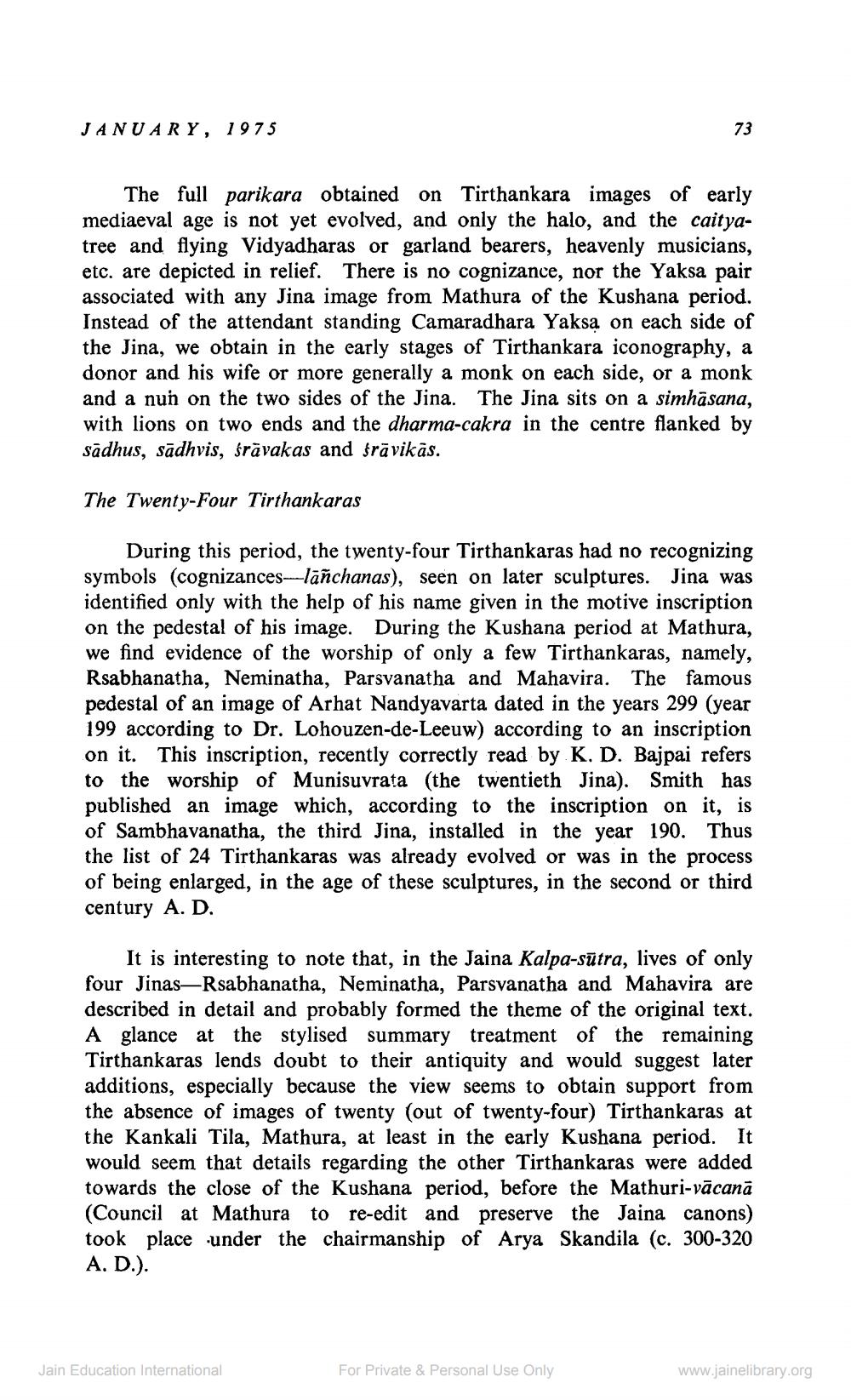Book Title: Jain Journal 1975 01 Author(s): Jain Bhawan Publication Publisher: Jain Bhawan Publication View full book textPage 9
________________ JANUARY, 1975 73 The full parikara obtained on Tirthankara images of early mediaeval age is not yet evolved, and only the halo, and the caityatree and flying Vidyadharas or garland bearers, heavenly musicians, etc. are depicted in relief. There is no cognizance, nor the Yaksa pair associated with any Jina image from Mathura of the Kushana period. Instead of the attendant standing Camaradhara Yaksa on each side of the Jina, we obtain in the early stages of Tirthankara iconography, a donor and his wife or more generally a monk on each side, or a monk and a nun on the two sides of the Jina. The Jina sits on a simhāsana, with lions on two ends and the dharma-cakra in the centre flanked by sādhus, sādhvis, śrāvakas and frāvikās. The Twenty-Four Tirthankaras During this period, the twenty-four Tirthankaras had no recognizing symbols (cognizances-lāñchanas), seen on later sculptures. Jina was identified only with the help of his name given in the motive inscription on the pedestal of his image. During the Kushana period at Mathura, we find evidence of the worship of only a few Tirthankaras, namely, Rsabhanatha, Neminatha, Parsvanatha and Mahavira. The famous pedestal of an image of Arhat Nandyavarta dated in the years 299 (year 199 according to Dr. Lohouzen-de-Leeuw) according to an inscription on it. This inscription, recently correctly read by K. D. Bajpai refers to the worship of Munisuvrata (the twentieth Jina). Smith has published an image which, according to the inscription on it, is of Sambhavanatha, the third Jina, installed in the year 190. Thus the list of 24 Tirthankaras was already evolved or was in the process of being enlarged, in the age of these sculptures, in the second or third century A. D. It is interesting to note that, in the Jaina Kalpa-sūtra, lives of only four Jinas-Rsabhanatha, Neminatha, Parsvanatha and Mahavira are described in detail and probably formed the theme of the original text. A glance at the stylised summary treatment of the remaining Tirthankaras lends doubt to their antiquity and would suggest later additions, especially because the view seems to obtain support from the absence of images of twenty (out of twenty-four) Tirthankaras at the Kankali Tila, Mathura, at least in the early Kushana period. It would seem that details regarding the other Tirthankaras were added towards the close of the Kushana period, before the Mathuri-vācanā (Council at Mathura to re-edit and preserve the Jaina canons) took place under the chairmanship of Arya Skandila (c. 300-320 A. D.). Jain Education International For Private & Personal Use Only www.jainelibrary.orgPage Navigation
1 ... 7 8 9 10 11 12 13 14 15 16 17 18 19 20 21 22 23 24 25 26 27 28 29 30 31 32 33 34 35 36
